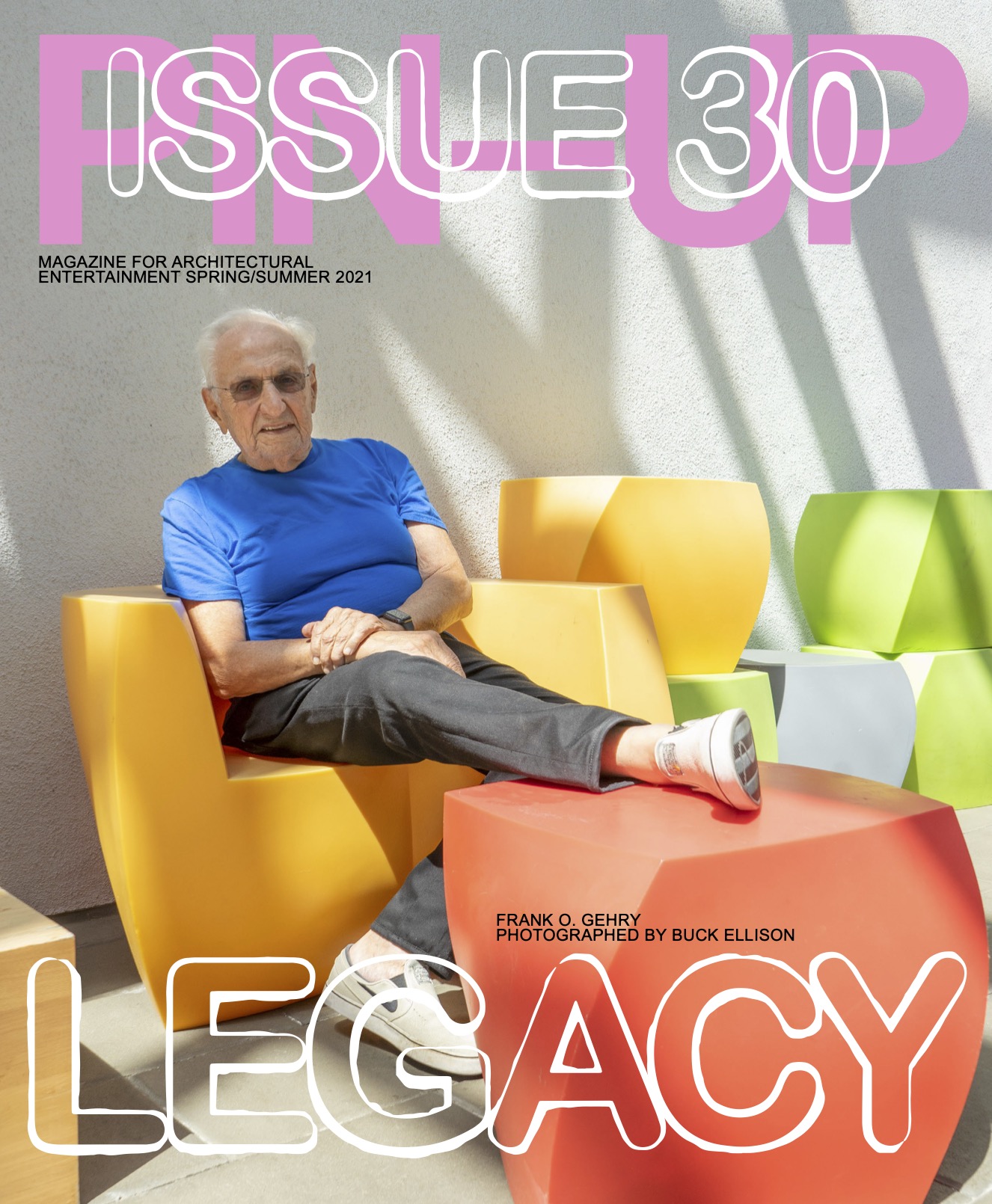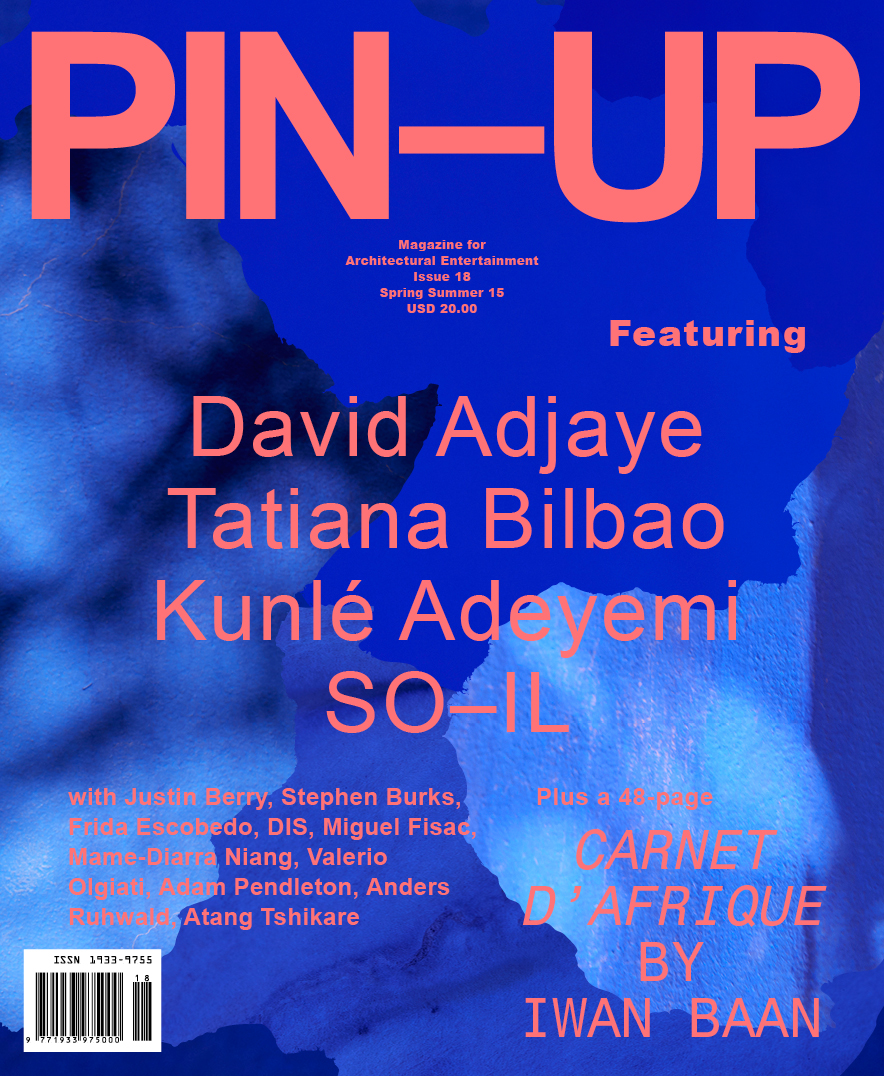Oakland-based artist Sadie Barnette makes work that is born from her family history — a narrative that is both intensely personal and speaks to a legacy of resistance and opposing societal conditions of racism. Her father, Rodney Barnette, is the subject of much of her work. He was an activist, a member of the Black Panther Party, and later the proprietor of the first Black-owned gay bar in San Francisco. Sadie Barnette’s artworks recontextualize and reimagine these histories, working hundreds of pages of FBI reports into liberatory acts and fantastical objects.

Frank Gehry is arguably the world’s most famous living architect. At 92, does he even require an introduction? Pritzker Prize winner. Iconoclast. Angeleno. His buildings are sculptural and controversial — cultural flash points and crowd-pleasing favorites. Last year, Frank Gehry: Catalogue Raisonné of the Drawings Volume One, 1954–1978, edited by historian Jean-Louis Cohen, was released by Cahiers d’Art. The first of what will be eight career-spanning tomes, the book focuses on early works — designs that predate the titanium and computational dexterity that mark Gehry Partners’ best-known architecture. The 1950s through the 70s were a time of wild growth and experimentation for the architect, from his diploma thesis at the University of Southern California (1954), with its midcentury aesthetic akin to the Case Study Houses and rife with Japanese influences, to Gehry’s own residence in Santa Monica (1978), which exploded any conventional notions of home. The abundant sketches and drawings in the Catalogue Raisonné reinforce an understanding of Gehry as a processes- based architect: iterative and intuitive, rigorously searching for form in what others might see as the arbitrary — methods, perhaps, not dissimilar to those practiced by the cohort of East and West Coast artists he ran with at the time.
Joar Nango’s identity as Sámi, the Indigenous people of northern Europe, is central to his art and architecture practice. Yet in terms of discipline or medium, he actively defies categorization, choosing instead to mobilize the space in-between and across worlds. This is partly to find breathing room within his creative practice and partly political stance — strategic evasion as post-capitalist critique. Through site-specific installations, video, and zines, Nango actively investigates intersections between Indigenous and contemporary architectures, traditional Sámi construction, and new media. The results have a way of escaping the present; instead, they create a kind of feedback loop between past and future architectural narratives.
Artist Lauren Halsey was born in Los Angeles, and her life and work are intertwined with the city — beauty shops in Watts, neon Colby posters, and the cheesy grin of Cheetos’s Chester Cheetah. Her recent solo exhibition at David Kordansky gallery was both a personal and urban archive. She filled the white-walled space to the roof beams with an installation that alternates between documenting brightly painted signs and black- and Latino-owned businesses in South Central, gone or facing demise due to gentrification, and modeling a speculative, Afrofuturist urbanism full of prismatic light. Halsey’s art world profile has steadily grown over the past few years, with awards and solo shows at Fondation Louis Vuitton in Paris and the Museum of Contemporary Art in Los Angeles. Young, queer, and black, she’s committed to making work that reflects and empowers not just her individual identity, but also her neighborhood, her community, and her friends, with whom she frequently collaborates. PIN–UP met Halsey before the closing of her installation to discuss, among other things, her plans to open a community center and dreams of becoming an architect.
It’s midday in northern New Mexico, and the guided tour starts with a request (nay command) to stay on the sandy path. We’ve come to visit a cave: in 1994, local cave digger Ra Paulette (he shirks the term artist) began burrowing into a sandstone cliff to create the intricate interiors of Windows on the Earth, a sanctuary-like hideaway. Dug by hand over the course of two years, it comprises a sequence of tall and narrow vaults converging on a central space, where a throne-like seat is set high up in the wall; as you move through the cave, eccentric ornamentation — organic whorls, fossil-like seashells, shrine alcoves — punctuates implausibly smooth surfaces. It’s a wonder of man shaping the landscape, but first, we’ve stopped for a New Age biology lesson.
Art institutions often crow about their roles as bastions of progressive thought — places robust enough to tackle tough cultural questions in the gallery. Yet the 2018 firings of several prominent curators and directors exposed the precarity of women who speak out and through their exhibitions and programs, provoke conversations about race, gender, privilege, and power. As we move into 2019, it seems more important than ever to interrogate the dubious narrative of the museum as a safe space, but also to hold out hope that it can be a place of resistance. Read More …
Driving the 101 Freeway from Silver Lake to Calabasas, California, I kick around in my head the literary references I could use to describe this stretch of road bounded by the Sherman Oaks Galleria to the south and the turnoff for the Ronald Regan Presidential Library to the north. Charles Bukowski’s pulp and grit was left back in Hollywood, we’ve crossed out of Reyner Banham’s ecologies, and the hills that so famously burn in Joan Didion’s Letter from Los Angeles are farther east. There’s probably a German term for this landscape of rolling hills, Starbucks, and Lexus dealerships. Certainly Adorno coined some phrase in his critique of the culture industry, written while living in exile in the Pacific Palisades.
It’s tempting to say that we are on the edge — the edge of culture, the edge of suburbia, the edge of rural California and all the narratives that go with it. (The Western High Noon was shot at Warner Bros. Ranch, which is now the Calabasas Golf Club.) But if we leave behind old-fashioned geography and look at our pin on the media map, we find that this is the territory of E!: a pop-cultural space populated by people whose names often start with K.
As busy, busy people who move through the world and occasionally need to sit still, we have a tacit understanding that furniture should be, if not comfortable, at least neutral — ready to accept the buttocks of any size, gender, race, or orientation. Beautiful designs tempt us into repose. However the conceit of universal design is upset when we are forced to recognize that not all bodies fit in or are supported by the most elemental of objects. So when, earlier this year, Hunger and Bad Feminist author Roxane Gay was fat-shamed for requesting a chair sturdy enough to support her frame and outcry ensued against this affront on body acceptance, I was also shocked by how a simple function — sitting — could be weaponized against bodies. It’s with Gay’s incident in mind that I approached maneuvering my wide hips into the dimensions of Frank Lloyd Wright’s Barrel chair. Low ceilings are generally cited for the architect’s famous disregard for bodies other than his own, his sense of scale being modeled on his (alleged) 5-foot-8-and-1/4-inch height. Designed in 1907 as part of the custom furniture of his Gesamtkunstwerk, Darwin Martin House in Buffalo, the Barrel chair is one of his most popular designs, often replicated in its nearly circular geometries. Settled into a reproduction of its oak corseting and obliged thereby to adopt a morally good posture, I imagine other people, other soft bits, shifting uncomfortably against the constraints of universality, yet comforted by the allure of an icon.

Taking cues from the French philosopher Emmanuel Levinas, architect Tatiana Bilbao frames her practice around the ethics of the “other,” a deep-seated philosophy and an almost moral compulsion to make architecture that puts the human subject first. It’s an idealist position, perhaps even old-fashioned, at a time when architecture’s social agenda is all too often shortchanged for formal hijinks. Indeed, Bilbao, who is in her early forties, began her career alongside other Mexican architects vying for the global stage, such as Fernando Romero, her friend and former business partner, who, with the swoopy shiny Soumaya Museum (2011), landed complex, computational architecture in Mexico City. Formally much quieter, Bilbao’s work carries its own powerful aesthetic — from early conceptual ideas to more recent projects such as the sensitive, light-flooded Tangassi funeral home in San Luis Potosi (2005–11) or the gleaming Bioinnova research building at the Monterrey Institute of Technology (2009–12) — and proves that architecture’s social responsibility doesn’t have to sacrifice beauty, materiality, or form. With 31 employees and projects in Belgium, China, France, Spain, and Switzerland, as well as her native Mexico, her namesake firm, which she runs with partners David Vaner and her sister Catia, is in high demand. But though she may have the schedule of a jet-setting “starchitect,” in person the mother of two small daughters is warm, down-to earth, and generous with the little time she has, sometimes to the point of exhaustion (just prior to the photo shoot for this issue, she was diagnosed with pneumonia). PIN–UP met Bilbao over a Peruvian lunch in downtown Los Angeles to talk about her interest in urban planning, her family history, and how working with Gabriel Orozco led to an architectural epiphany of sorts.
To read the full interview, download PDF here.